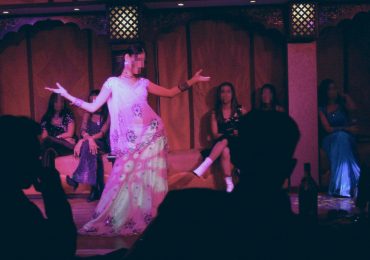Billions of people have begun their 15-day celebration of the Lunar New Year, marked by the many red paper cuttings, Chinese lanterns, and paper door banners adorning homes and businesses.
The Lunar New Year is one of the most popular holidays in China, though it’s celebrated all across the Asian continent and in pockets of ethnic communities across the globe. The holiday marks the arrival of spring and the start of a new year under the lunisolar calendar in a celebration that dates back to the Chinese agrarian tradition.
[time-brightcove not-tgx=”true”]
Every year, the holiday, also known as the Spring Festival, begins on the second new moon after the winter solstice. In 2024, the celebration falls on Saturday, Feb. 10. and marks the year of the dragon. (There are 12 different animals in the Chinese zodiac—rat, ox, tiger, rabbit, snake, horse, sheep, monkey, rooster, dog and pig—each of which will mark the personality and fortune of those born during that year).
Dragons have a special significance in China. They are the only animal of the zodiac that is mythical, and the creature largely symbolizes luck, strength, ambition, and charm.
Here’s how communities across the world are celebrating.
How China is celebrating Lunar New Year
In the second most populous country of the world, Chinese locals, along with tourists, gathered to observe the holiday by setting off firecrackers and fireworks.
Ancient legend dictates that the tradition wards of evil spirits, specifically scaring the mythical monster of Nian who would allegedly leave its home at the bottom of the sea to feast on people and livestock in villages at the start of the new year. That is, until an elderly man realized that he could scare Nian away by burning bamboo (which is similar to a firecracker), lighting candles or having any bright lights, and pasting red decorations on doors.
The tradition has since stuck, prompting people to light red candles across temples and host colorful fireworks shows on the eve of the Chinese New Year. Some of the celebrations have been stifled by firework bans across hundreds of urban communities in China, with legislators citing pollution and safety hazards as the reason for the ban.
Read more: 5 Things to Know About Lunar New Year
How the U.S. is marking Lunar New Year
A continent away, Asian communities in the U.S. are also commemorating the joyous occasion.
Celebrations are especially prominent in California, the state with the largest number of Chinese immigrants, though New York also has a large population.
The Golden State marks their holiday with festivals featuring lion dances, and floral arts displays in San Marino, and the highly-anticipated Golden Dragon Lunar New Year Parade in Los Angeles. More than 100,000 spectators are expected to attend the aforementioned parade, which has been happening for 124 years.
Other communities, like that of Monterey Park, are healing from the heartache of tragedy as they commemorate the one year anniversary of the shooting that left 11 dead and injured another nine at a local ballroom dance studio during Lunar New Year celebrations.
Indonesia’s Lunar New Year festivities
In Indonesia, families traditionally go to their local temple to mark the beginning of the Lunar New Year. Some temples have been in place for centuries, like the Yin De Yuan Temple in the capital of Jakarta, which was built in 1650. Religious centers are usually decorated with red lanterns and large red candles.
There are other fun cultural events like lion dances, music, and creative performances in the city of Semarang. Other festivals are a blend of Chinese and Javanese culture, such as the Grebeg Sudiro festival in Solo, located in the Central Java Province. Gregbeg celebrations have large cone-shaped displays of fruits, vegetables, or cakes that are “fought over” by the spectators, according to Indonesia’s tourist site. The custom stems from a Javanese teaching that emphasizes that people have to earn what they eat.
How the U.K. is celebrating the Lunar New Year
The London Chinatown Chinese Association is hosting a parade in honor of the holiday, set to take place on Sunday, Feb. 11. The festivities will move through Chinatown, bringing traditional dragon dancers to Trafalgar Square to start things off. Onlookers will also be able to enjoy delicious food, opera, and martial arts performances.
“As the Year of the Dragon begins, I want to thank London’s East and South East Asian communities for everything they contribute to our city,” wrote London Mayor Sadiq Khan in a post on X (formerly Twitter). “Wishing you all—and everyone celebrating across our capital and around the world—a very Happy Lunar New Year.”
Leave a comment








